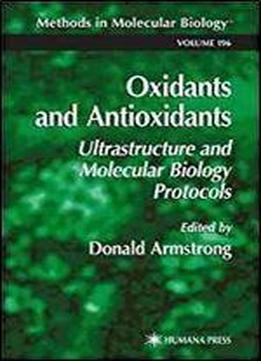
Oxidants And Antioxidants: Ultrastructure And Molecular Biology Protocols (methods In Molecular Biology)
by Donald Armstrong /
2002 / English / PDF
8.6 MB Download
In our first protocols book, Free Radical and Antioxidant Protocols (1), r- erence to in vivo, ex vivo, or in situ techniques were few compared to classical biochemical assays and only 6 of the 40 chapters were concerned with these applications. In our second book, Oxidative Stress Biomarkers and Antioxidant Protocols (2), which is being published concurrently with this third volume, Oxidants and Antioxidants: Ultrastructure and Molecular Biology Protocols, the number of such chapters has increased. The literature dealing with histoche- cal/cytochemical and immunohistochemical techniques and staining to identify cellular/subcellular sites of oxidative stress has expanded rapidly, as has the molecular biology methodology used to analyze free radical and antioxidant (AOX) reactions, as well as the monitoring of living tissue. A two-way search was performed for each technique listed in Table 1, coupled with “oxidative stress” using the PUBMED search engine from the National Library of Medicine at NIH. Most of the techniques involved in m- suring oxidative stress employ molecular biology or ultrastructural approaches. Of these techniques, histology, polymerase chain reaction, and Western blotting are the most widely used. Several forms of therapy are now available for patients with increased oxidative stress. In addition to standard antioxidant therapy supplementation in vivo and in vitro, photodynamic therapy (PDT) employs excitation of a photon-emitting compound delivered systemically for free radical-mediated necrosis of affected tissues, and stem cells are also being used to induce signaling events or replace antioxidant enzymes.











